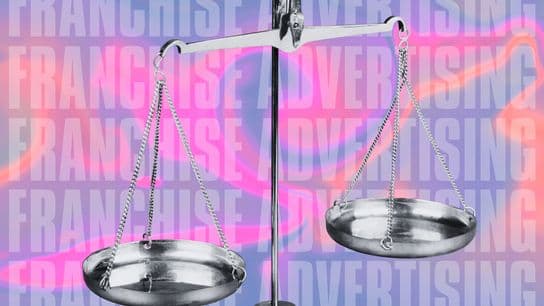The Path of an SBA Rule Change
In an upcoming BoeFly Insight Webinar on December 20, a panelist of experts will explain what franchises can expect from the January 1, 2017 change.
Since 1998, lenders have dutifully checked a list of brands (aka, The Franchise Registry) to determine if their prospective borrower was affiliated with a franchise that complied with SBA’s eligibility rules. The lender knew the SBA’s loan guarantee was in good standing (at least as far as the franchise compliance issue) when the brand was on the list. On January 1, 2017 that all changes.
While a rule change has been long expected, it’s likely very few people had clear insight into what the change would be. In December 2014, the SBA issued a Request for Comment (Uncle Sam’s version of a nation-wide suggestion box). The Request for Comment invited respondents to share perspective on the SBA rules impacting franchise lending, including the role of the approved brand list. By issuing a Request for Comment, the SBA indicated their interest in change. A read into specific questions in the Request for Comment, such as, “Should SBA continue to list agreements on a central registry?” may have foreshadowed their ultimate decision to discontinue the registry.
Shortly thereafter, the head of NAGGL, the SBA lender trade association, called for the end of the Franchise Registry. Here is an excerpt:
“Based on many years of listening to our members, and after hearing increasing concern voiced over the past 7+ years, NAGGL believes that SBA's existing requirements and the processes related to franchise eligibility review are burdensome, confusing and so complex that they actually serve as a deterrent to lenders' ability to provide much needed capital to entrepreneurs looking to start or grow a small business within a franchise structure.” He went on to say, “SBA should discontinue the Franchise Registry.”
The SBA also received comments calling for continuing the status quo, or something similar to it. A March 2015 Franchise Times article summarized the opposing view:
“The International Franchise Association (IFA) and FRANdata (the private company that administers the Franchise Registry), plus others, favor an initial ruling by the SBA to certify whether a franchisor’s contract makes its franchisees eligible for small-business loans. In subsequent years, franchisors would then self-certify, by evaluating only those changes to contract language that could undermine eligibility.”
117 individuals responded to SBA’s Request for Comments and their views largely tracked the two opposing views offered by NAGGL (it’s broken and requires fixing) vs. IFA and FRANdata (it isn’t broken so leave it alone). We’ll likely never know how these comments worked into SBA’s deliberations, but suffice it to say the SBA’s process spanning two years was not apparently capricious.
Here’s what you can expect to change:
Under the old rule, the franchisor would submit their franchise agreement for SBA review to verify the franchisor wasn’t able to exert undue control, thereby disturbing the program’s intent: flow capital to business owners who can profit from their efforts while bearing the risk of loss. Once a brand cleared review, the result was memorialized on the Registry, ready for the next lender with an opportunity to deploy credit to a future franchisee.
Under the new rule, the franchisor and franchisee sign a two-page form that lives as an addendum to the franchise agreement. The form confirms that the franchisor doesn’t exert undue control on four areas: change of ownership, forced sale of assets, covenants and franchisee hiring. The new addendum specifically states that it (the addendum itself) overrides any conflicts that may exist with the franchise agreement.
“The SBA did a fine job in reducing the ambiguity in the process by making it clear that this new addendum will override any conflicts to the franchise agreement that do not meet SBA eligibility requirements,” said Tom Spadea, a partner with Spadea Lignana, a national franchise law firm.
For the lender’s part, the fact that the borrower is part of a franchise must be identified on SBA’s systems and, if so, the lender must secure the signed two-page addendum.
Now that the rule has been issued, it would be interesting to know the current perspective of those 117 individuals who answered the SBA’s call for comment. Does that well-known franchise executive who wrote that a rule change “will create confusion, delay, and inhibit SBA franchise lending,” feel the same today? Those brands who support their franchisees with a well-defined financing path, and who don’t impose undue control provisions in the franchise agreement, will not skip a beat.
During a complimentary webinar on December 20 from 2 p.m. to 3 p.m. ET, franchisors can tune in to heed the various opinions of franchise, legal and banking experts regarding this major change.
Panelists will include:
Nancy Broudo: SVP of BoeFly
Jeff Nager: SVP and Director of Small Business Lending of Bancorp
Dave Schaefers: Chief Development Officer of Driven Brands
Tom Spadea: Partner of Spadea Lignana
Charles Watson: Chief Development Officer of Tropical Smoothie Cafe
Mike Rozman, the CEO of BoeFly, will be moderating the event.
This session is part of BoeFly’s Insight Webinar for Franchisors series, which regularly features industry leaders sharing their perspectives on best practices. To register for the webinar, click here.













